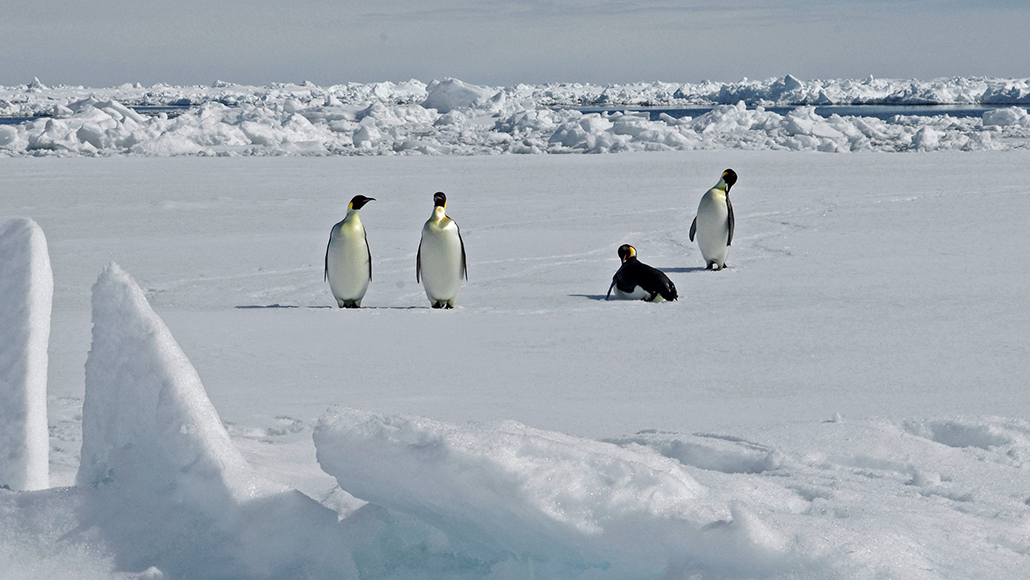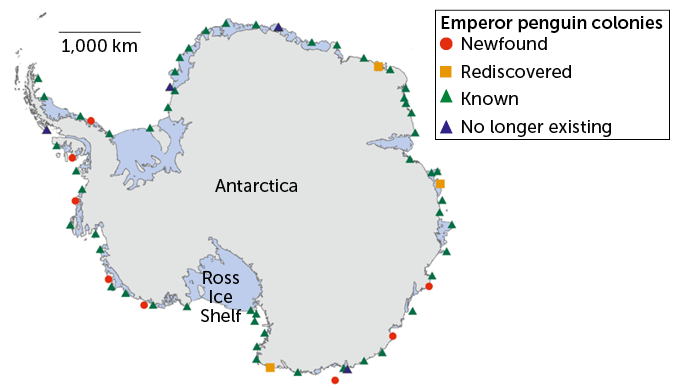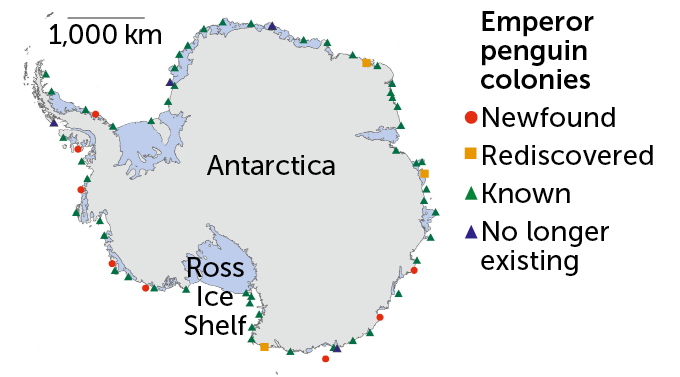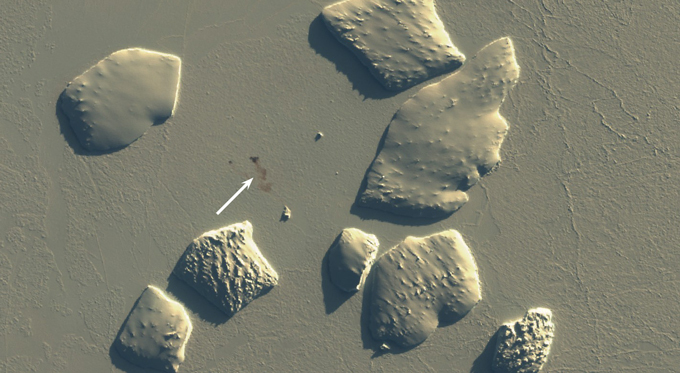
Using satellite images of penguin poop, researchers now think there are 61 total emperor penguin colonies in Antarctica.
P. Bucktrout/BAS
- More than 2 years ago
Patches of penguin poop spotted in new high-resolution satellite images of Antarctica reveal a handful of small, previously overlooked emperor penguin colonies.
Eight new colonies, plus three newly confirmed, brings the total to 61 — about 20 percent more colonies than thought, researchers report August 5 in Remote Sensing in Ecology and Conservation. That’s the good news, says Peter Fretwell, a geographer at the British Antarctic Survey in Cambridge, England.
The bad news, he says, is that the new colonies tend to be in regions highly vulnerable to climate change, including a few out on the sea ice. One newly discovered group lives about 180 kilometers from shore, on sea ice ringing a shoaled iceberg. The study is the first to describe such offshore breeding sites for the penguins.
Great guano
Using satellite images of penguin poop, researchers have now identified 61 emperor penguin colonies on Antarctica. In addition to 50 previously known colonies (green triangles), a new study confirms three that were previously suspected (yellow squares) and adds eight new ones (red circles). To spot the colonies, researchers scanned images captured by the European Space Agency’s Sentinel-2 satellite, looking for telltale reddish-brown stains on the otherwise pristine Antarctic snow.
Antarctic emperor penguin colonies


Penguin guano shows up as a reddish-brown stain against white snow and ice (SN: 3/2/18). Before 2016, Fretwell and BAS penguin biologist Phil Trathan hunted for the telltale stains in images from NASA’s Landsat satellites, which have a resolution of 30 meters by 30 meters.

The launch of the European Space Agency’s Sentinel satellites, with a much finer resolution of 10 meters by 10 meters, “makes us able to see things in much greater detail, and pick out much smaller things,” such as tinier patches of guano representing smaller colonies, Fretwell says. The new colony tally therefore ups the estimated emperor penguin population by only about 10 percent at most, or 55,000 birds.
Unlike other penguins, emperors (Aptenodytes forsteri) live their entire lives at sea, foraging and breeding on the sea ice. That increases their vulnerability to future warming: Even moderate greenhouse gas emissions scenarios are projected to melt much of the fringing ice around Antarctica (SN: 4/30/20). Previous work has suggested this ice loss could decrease emperor penguin populations by about 31 percent over the next 60 years, an assessment that is shifting the birds’ conservation status from near threatened to vulnerable.





